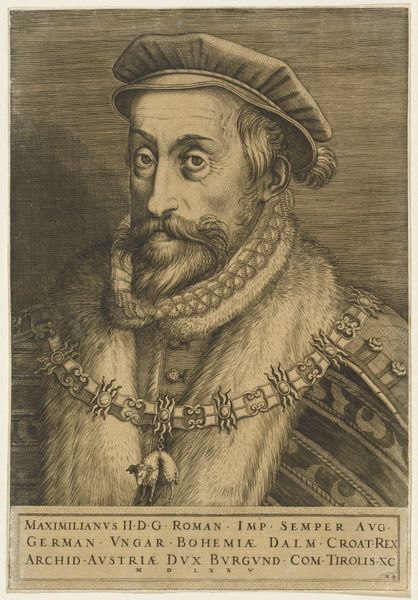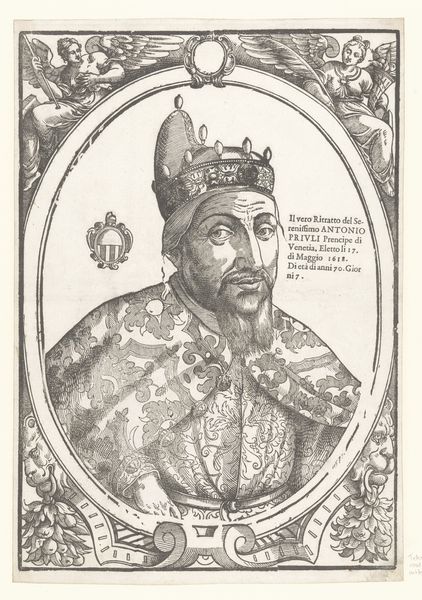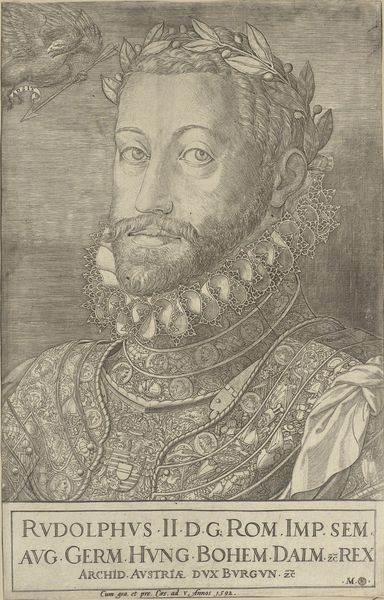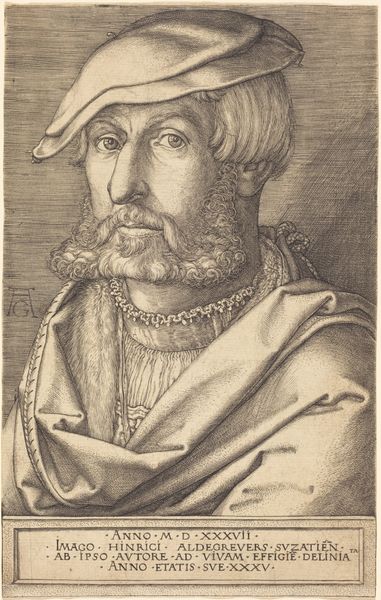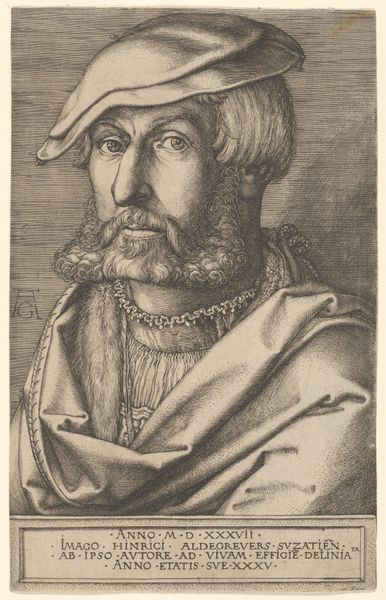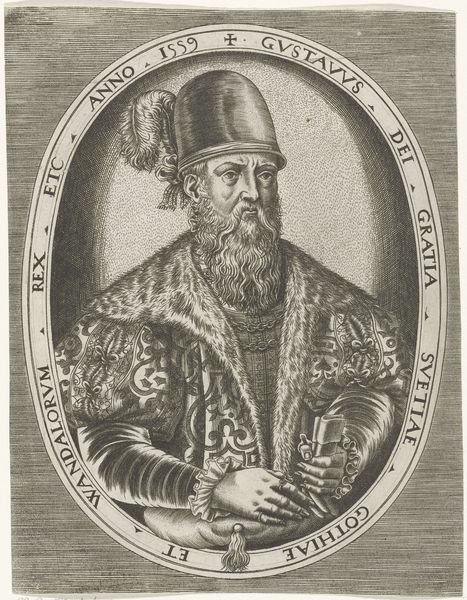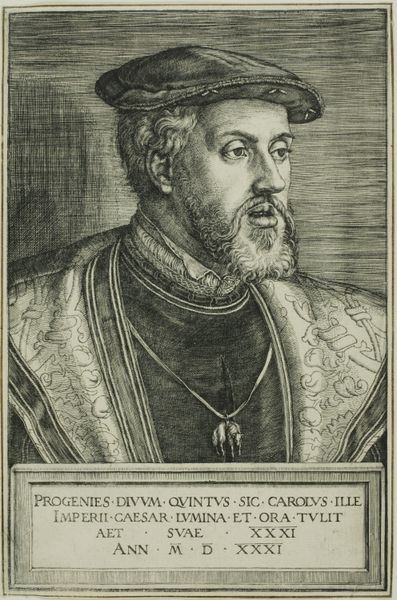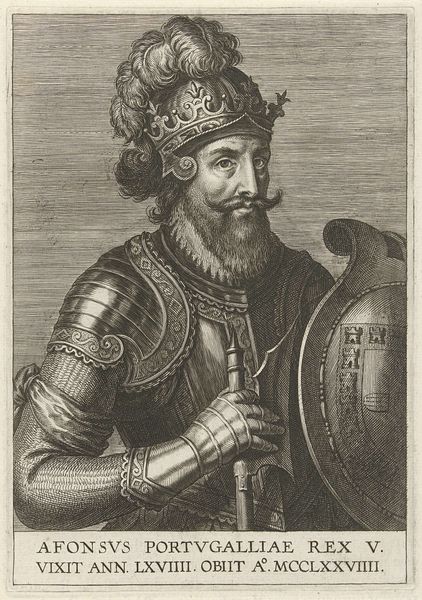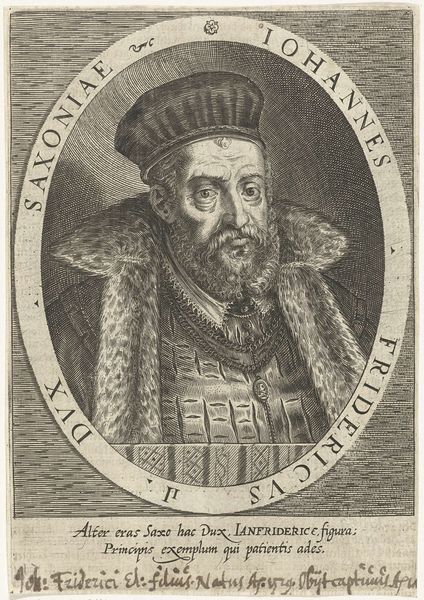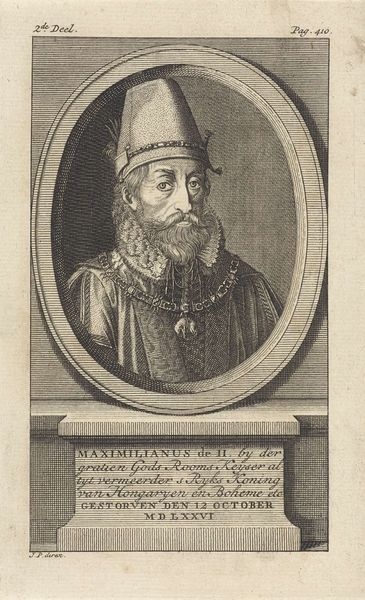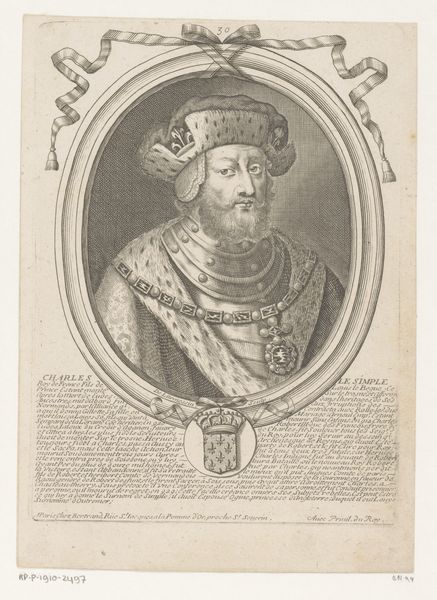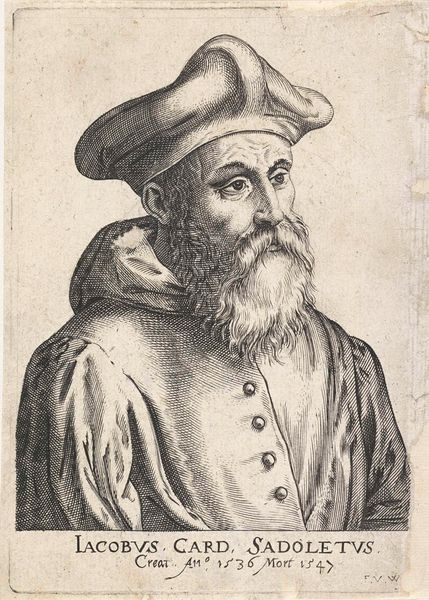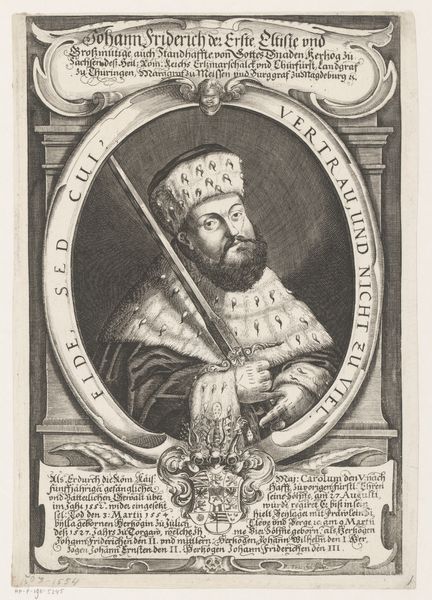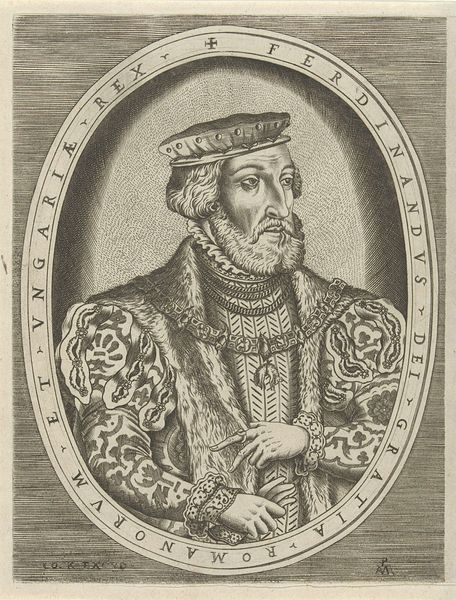
print, engraving
#
portrait
# print
#
old engraving style
#
mannerism
#
portrait reference
#
portrait drawing
#
engraving
Dimensions: sheet (trimmed to plate mark): 20.9 x 15.5 cm (8 1/4 x 6 1/8 in.)
Copyright: National Gallery of Art: CC0 1.0
Editor: This engraving from 1574 by Martino Rota portrays Emperor Maximillian II. It's incredibly detailed. It's such a formal depiction, capturing him with all his regalia. The setting behind him almost feels staged. What social and cultural forces do you think were at play when a work like this was created? Curator: A portrait like this serves as a powerful piece of propaganda. Consider the socio-political context of the late 16th century. Rota, as the artist, would have been acutely aware of his role in solidifying the Emperor's image. The museum—in a way, that’s what the imperial court functioned as—needed images to project power. Did these visual strategies actually sway popular opinion, or were they merely gestures of authority? Editor: So, it's less about individual artistic expression and more about the Emperor's PR, so to speak? Curator: Exactly. Think about the role of the engraver in disseminating this image widely. Prints democratized portraiture, taking it out of the sole realm of the painted canvas for the wealthy elite. The power of an image multiplies with each print struck. Now, how do we interpret the inclusion of the city in the background? Does this offer insight into Maxmillian's connection with his realm? Editor: It positions him very deliberately, doesn't it? It's a symbol of his rule, both visually and physically. The composition itself is therefore deeply political. Curator: Precisely. Consider Mannerism’s influence in the work, which goes beyond visual aesthetic. Did Mannerist sensibilities actually suit the political messaging, and does the work effectively perform its propagandistic function today? Editor: This conversation's really changed how I see the portrait. I was so focused on the artistic technique that I overlooked the very deliberate statement it makes. Curator: That's the fascinating thing about art: its meaning shifts depending on how you frame the questions you ask. And the power it has rests on not just on what’s created, but in its perception.
Comments
No comments
Be the first to comment and join the conversation on the ultimate creative platform.
